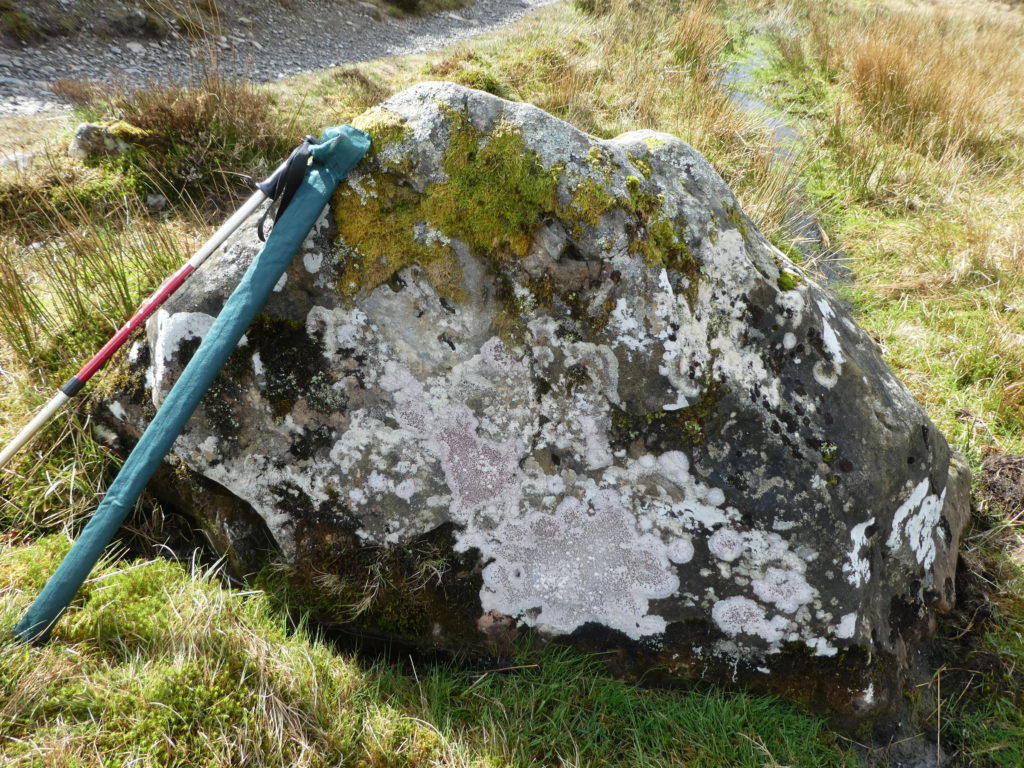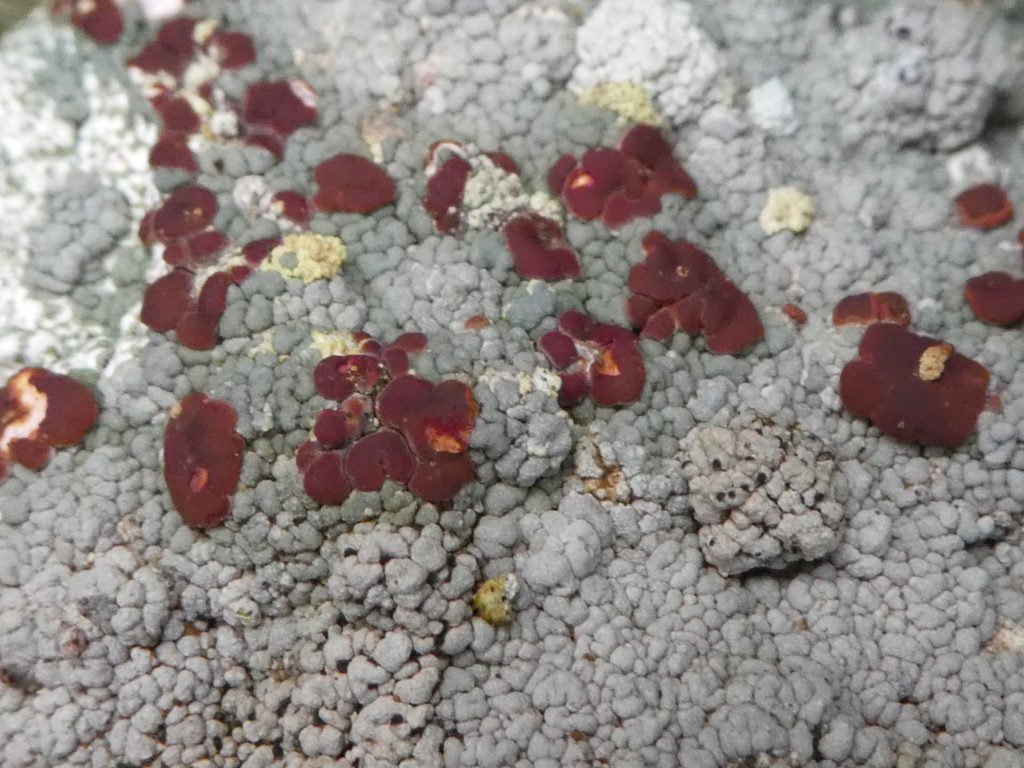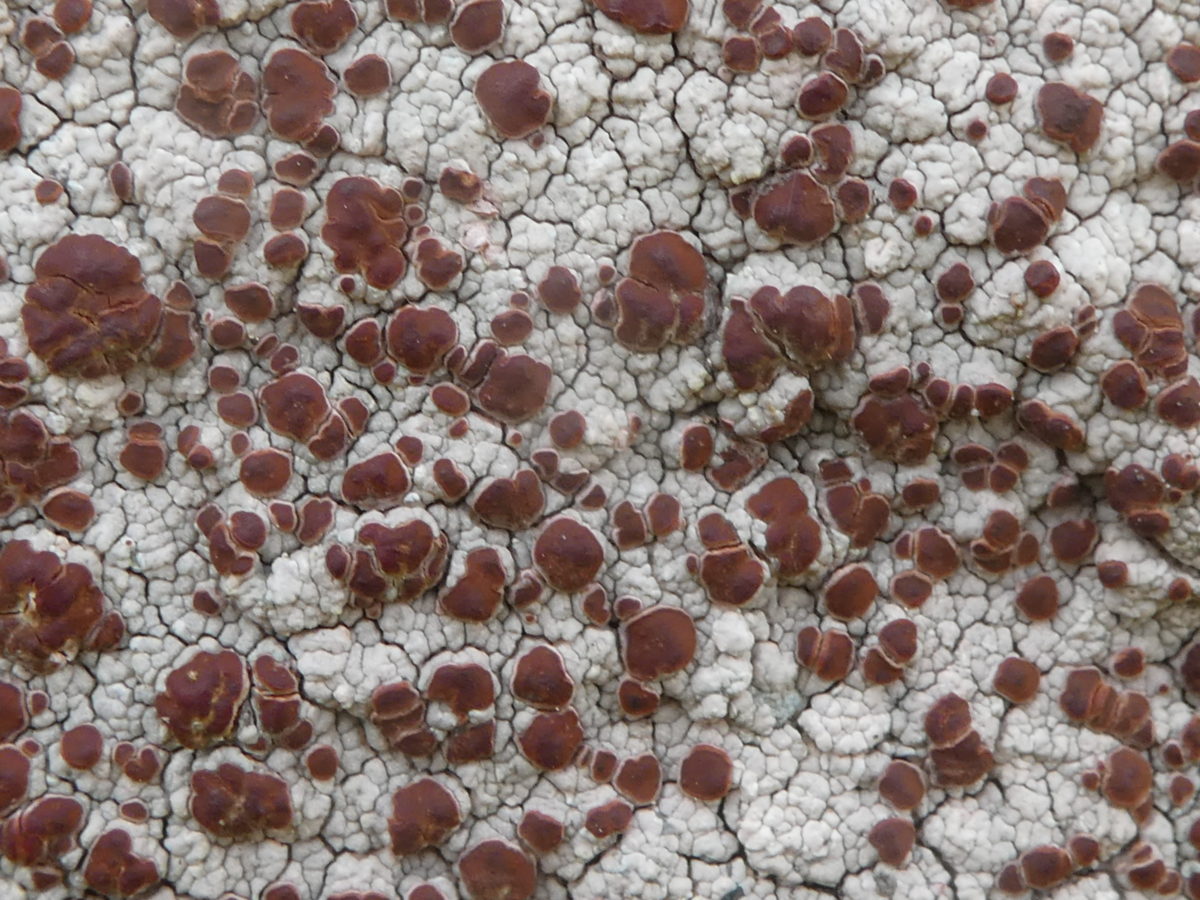Many of the lichens you see up on the fells are hard to tell apart. But one that is easy to identify is Ophoparma ventosa, the blood spot lichen. Once you’ve seen it, you’ll remember it. And you might not even need a hand lens!

It’s a crusty, cracked and rough (sometimes warty) splodge on the rocks with big (up to about 3mm!), flat, red fruiting bodies (apothecia to give them their proper name) that stand out from quite a distance. They look like blood spots: sometimes dried blood, sometimes a bit fresher. Young fruits can have a paler margin.
Funnily enough, there are two different types of Ophioparma ventosa, which can be found next to each other if you’re lucky. One has a grey coloured thallus (main body of the lichen) with a bit of a pinky tinge, the other is a yellowy-grey. The difference is that the yellow one contains Usnic acid (which gives it the colour).
If you’re in any doubt about whether it’s Ophioparma, you can put some K (caustic soda) on it: the thallus goes a yellow-orange colour, the apothecia a purplish-blue.
You’ll find it on rough-grained acid rocks (boulders, outcrops, cliffs and walls) across Cumbria: British Lichen Society records show it from the Duddon Valley; near Beetham; towards Tan Hill and in Bowness on Solway as well as on the Lake District Fells, where it’s most common. But, at the time of looking, there were only 68 records across the county.
The distribution seems really patchy. Sometimes you see loads of it: on a recent day up one side of Red Screes it seemed to be on almost every rock. But then a few days later, on the other side of Red Screes, I didn’t find any at all. The difference is probably to do with rock type.
If you look at Ophioparma ventosa very carefully through a hand lens, you’ll maybe see some black blobs on the surface as well. Now sometimes these are the lichen’s pycnidia, from where asexual spores are released. But they might also be a lichenicolous fungus called Muellerella ventosicola. This has recently been seen for the first time in England (Devon) and was then found almost immediately in Cumbria. I haven’t yet found it myself, but I’ve started looking at the black dots just a bit more closely!
We’d like to know more about where Ophioparma ventosa is in Cumbria. Next time you see some, take a photo on your phone, grab a grid reference for it (https://gridreferencefinder.com/) …and then let us know! Together we can track the blood spots!

